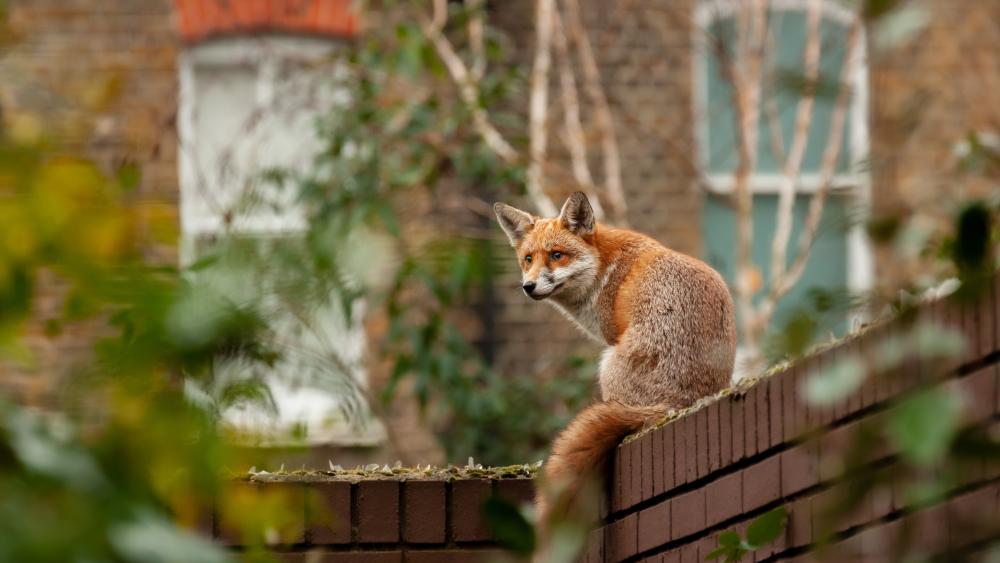
The fox is quite common in cities. | Photo: shutterstock_1889796799
Urbanisation is increasing worldwide. In order to make cities more sustainable and to preserve biodiversity outside of nature reserves, research has increasingly been devoted to the field of urban ecology in recent years.
One research hypothesis is, for example, that some species may be able to adapt to urban conditions faster and better than others because of certain characteristics. These include learning ability, mobility and flexibility. It is also known that animals such as squirrels and birds are often bolder in urban areas than their counterparts in the countryside. Or that although population density is higher in cities, this does not have a positive effect on biodiversity. One of the aims of the project is to gather concrete evidence on these and other hypotheses.
"In some cases, completely new ecosystems are created in cities, and each city has its own history, its own climatic, landscape and cultural conditions. In each city, so to speak, a separate ecological and evolutionary experiment is taking place. Bundling the various findings and hypotheses, and finding out how transferable they are is a challenge," says Dr Sophie Lokatis, explaining the principles of urban ecology. She did her doctorate at the IGB and the FU Berlin and led the study.
Map of scientific hypotheses provides framework for targeted research
In this study, the team of urban ecologists identified 62 important hypotheses on urban ecology and located them on a scientific map, a so-called hypothesis network. This map can then be linked to information from empirical studies. In this way, the scientists aim to contribute to making research in this rapidly growing field more efficient: existing research and opportunities for cooperation easier to find, and research projects better connected with each other.
"We are openly providing our hypothesis overview in Wikidata and hope to further develop this project cooperatively in the future," explains Prof. Jonathan Jeschke, researcher at the IGB and FU Berlin and co-author of the study. "Cities can preserve and promote biodiversity, and we want to contribute from the research side to making knowledge about this more available," added Dr Tina Heger, IGB researcher and also a leading author of the study. Together with Jonathan Jeschke, she initiated the platform www.hi-knowledge.org, where a network of hypotheses on invasion biology is published.
The Urban Ecology Hypothesis Network is divided into four main themes: Urban species traits and evolution, Urban biotic communities, Urban habitats, and Urban ecosystems.
To illustrate the types of research hypotheses that exist about nature in the city, we have selected 5 hypotheses as examples.
5 fascinating hypotheses in urban ecology
The following and other hypotheses collected in the project are based on individual observations and studies. Whether they apply across cities, and how general they are, remains to be seen as specific evidence is gathered on the hypotheses - this is a future aim of the project.
The idea of the ideal urban dweller
Some species adapt faster and better to urban conditions than others because of certain characteristics. The focus is on predicting and explaining which traits characterise species living in urban areas and how species adapt to the urban environment, for example through fast learning, mobility or greater dietary flexibility.
The bold urban dweller
It has been found that animals also adapt their behaviour: they tend to become bolder in urban areas than in non-urban areas. This has already been shown for squirrels and birds, for example. The vigilance and escape distance decrease.
Credit card hypothesis
This hypothesis states that the lower variability of resources in cities and the lower risk of being killed by a predator allow for higher population densities of species in urban areas because many weak competitors survive. This assumption focusing on urban birds is called the credit card hypothesis, because the urban environment allows animals to 'live on credit'.
The density-diversity paradox in cities
In biological communities, the number of species usually increases with the number of individuals. However, cities tend to have lower biodiversity than natural areas, despite often having higher numbers of individuals.
Biotic homogenisation of cities
As a result of globalisation, not only do shops look alike no matter in which city you are, but species in cities across the globe are also becoming increasingly similar as urbanization continues.
Whatever nature looks like in the city, there are always ways to protect and enhance it, and thus create unique and special urban ecosystems.






